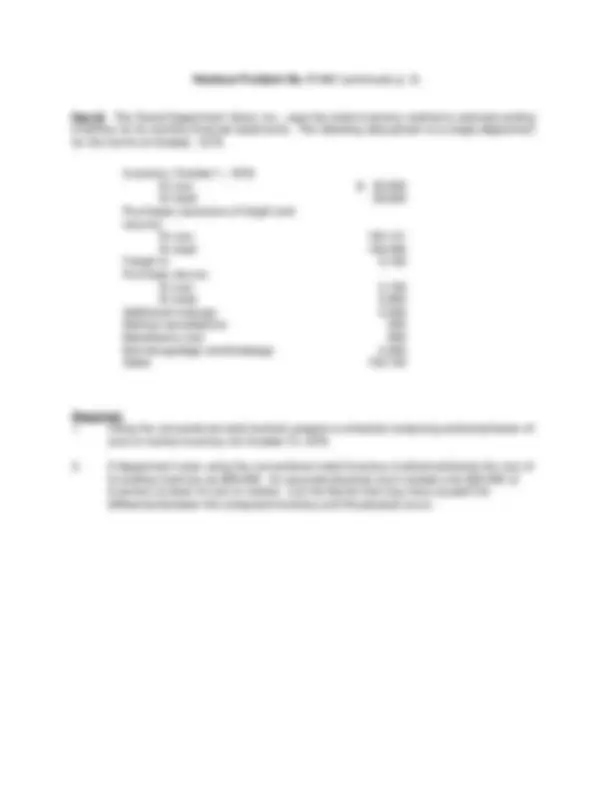



Study with the several resources on Docsity

Earn points by helping other students or get them with a premium plan


Prepare for your exams
Study with the several resources on Docsity

Earn points to download
Earn points by helping other students or get them with a premium plan
Community
Ask the community for help and clear up your study doubts
Discover the best universities in your country according to Docsity users
Free resources
Download our free guides on studying techniques, anxiety management strategies, and thesis advice from Docsity tutors
Material Type: Assignment; Professor: Hall; Class: CPA PROBLEMS; Subject: Accounting (Univ); University: Western Kentucky University; Term: Fall 2000;
Typology: Assignments
1 / 2

This page cannot be seen from the preview
Don't miss anything!


Instructor: Dr. Hall Accounting 460 Estimated time CPA Problems 40-50 minutes Handout Problem No. F-
This problem consists of two unrelated parts.
Part A. The controller of the Investor Corporation, a retail company, made three different schedules of gross margin for the first quarter ended September 30, 1978. These schedules appear below.
Sales ($10 per Unit)
Cost of Goods Sold Gross Margin
Schedule A Schedule B Schedule C
The computation of cost of goods sold in each schedule is based on the following data:
Units Cost per Unit Total Cost
Beginning inventory, July 1 Purchase, July 25 Purchase, August 15 Purchase, September 5 Purchase, September 25
The president of the corporation cannot understand how three different gross margins can be computed from the same set of data. As controller, you have explained to him that the three schedules are based on three different assumptions concerning the flow of inventory costs; i.e., first-in, first-out; last-in, first-out; and weighted average. Schedules A, B, and C were not necessarily prepared in this sequence of cost-flow assumptions.
Required:
Prepare three separate schedules computing cost of goods sold and supporting schedules showing the composition of the ending inventory under each of the three cost-flow assumptions.
Handout Problem No. F-141 (continued, p. 2)
Part B. The Grand Department Store, Inc., uses the retail-inventory method to estimate ending inventory for its monthly financial statements. The following data pertain to a single department for the month of October, 1978.
Inventory, October 1, 1978: At cost At retail Purchases (exclusive of freight and returns): At cost At retail Freight-in Purchase returns: At cost At retail Additional markups Markup cancellations Markdowns (net) Normal spoilage and breakage Sales
Required: